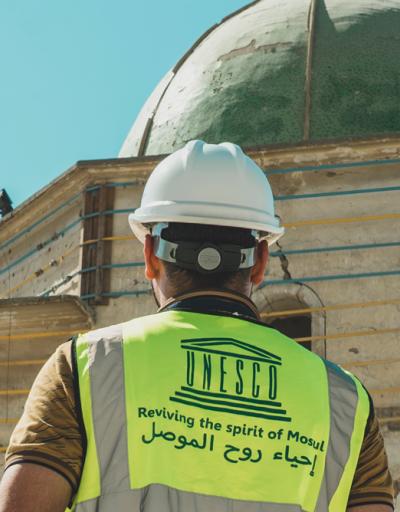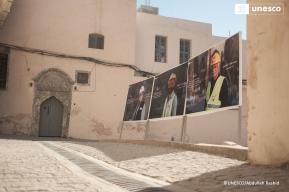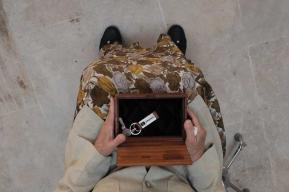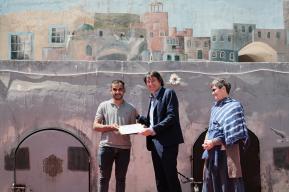
Al-Saa'a Convent
In 1870, the first pontifical mission was sent to Mesopotamia. It founded in Mosul the Convent of Our Lady of the Hour – Couvent Notre-Dame de L’Heure - also known as the Latin Church. From its origin, this convent had three dimensions: religious, cultural and social. It includes a church, a seminary with accommodation for a community of brothers and a community of sisters, a school for boys, a school for girls, as well as a hospital and a house for mission employees. A school for women teachers was then added.
The Dominicans having no books to teach, rather than importing European books, they decided to create in Mosul the first printing press in Mesopotamia. They published the first Bible in Arabic, the first Kurdish grammar and many other books of local interest.
Empress Eugenie of France de Montijo, wife of Napoleon III, financed in 1876 the bell tower (the first Iraqi bell tower), built which was installed in 1880, and donated its famous clock with four- dial clocks. The famous clock gave its name to the district and its chimes paced people’s lives throughout the life of the whole city.
The structure of the Al-Saa’a Church was damaged during the occupation of the city by Daesh and its convent was looted and ransacked.
Putting local communities at the heart of reconstruction
In September 2020, in close collaboration with the Dominican Order and Iraqi relevant authorities, UNESCO launched the preparatory phase for the reconstruction. The priority was to secure the site and clear it from unexploded ordnance. It was followed by the preparation of the detailed design for the execution of the works.
The final design of the project site was the subject of numerous bilateral consultations. Such detailed consultations with experts and local stakeholders allowed the designs to satisfy local expectations and generate a sense of local ownership.
The Project, along with Al-Tahera Church, has created yet more than 1,000 jobs to date – exceeding the project’s initial job-creation target, as the majority of activities has been conducted by local teams of experts and workers. This has enhanced local opportunities for skills development.
The active phase of reconstruction will start in March 2022

3 questions to Frère Olivier, representative of the Dominican order in Mosul
What is the particularity of Mosul?
Frère Olivier — Mosul has always been a meeting place – a place where different paths converge. It’s in the very etymology of the word; Mosul means crossroads. Here, the architecture expresses the multiculturalism of society. The Convent of Our Lady of the Hour was built by both Christians and Muslims. Over the last two decades it became a sanctuary frequented by the faithful of both religions. This is what characterizes Mosul: the city is a mosaic, marked by different hues which form a harmonious design. These links were shattered by the war. Today, we want to rediscover them.
What are the challenges of the Our Lady of the Hour project?
When the reconstruction of Mosul began, we were worried this part of our heritage would be forgotten. Without the drive of UNESCO, and the financial support of the United Arab Emirates, the reconstruction of the Convent would never have been considered. The initiative ‘Revive the Spirit of Mosul’ gives rise to so much hope because it’s rebuilding the city’s morale. Rebuilding the city together is a way of rebuilding society. We want these sites to rediscover their purpose, to help breathe life into the three elements at the heart of the first Pope’s Mission to Mesopotamia – the religious, the cultural, and the social. This Convent has always been open to all, to people from all sectors of society, and of all faiths, and to women just as it is to men.
Women seem to have an important place in the convent, can you tell us why?
In traditional societies it’s important to have places in which women can come and go freely, and this includes religious sites. Our Lady of the Hour hosted the first school for girls in Mesopotamia, and also the first college for female teachers. These Iraqi women then fanned out across the whole of the Plain of Nineveh, and also went up into the mountains as far as Zakho in order to found schools in the villages. Our mission has not changed. Today, there are 150 Dominican Sisters in Iraq, who follow the same type of instruction. Our most important raw material, is humanity.




